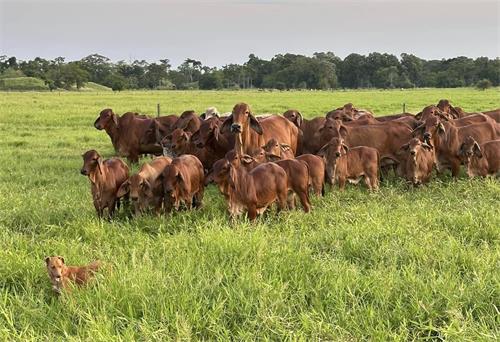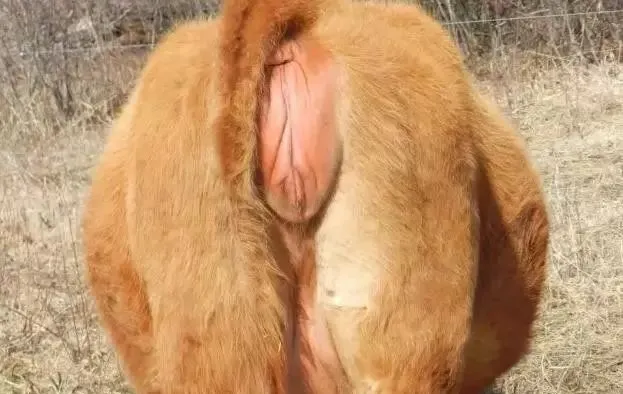When hormonal synchronization protocols go wrong, the normal follicular wave pattern in cows gets disrupted—and we end up seeing shifts in timing, wave dynamics and follicle fate. I’ll walk you through what typically happens, based on research, and explain how foreign experts interpret these failures. You’ll feel like you're in a relaxed chat over coffee, yet get sound, research-backed insight.

Normal Follicular Wave Patterns
In cattle, follicle growth happens in waves—usually two or three per cycle, sometimes more depending on breed and physiology. Each wave kicks off when a cohort of small antral follicles gets recruited. Among that group one becomes dominant; the rest regress via atresia. Around 2–3 days after wave emergence you see diameter deviation: the dominant follicle outpaces its neighbors.
Estrus synchronization protocols—things like GnRH, prostaglandin, progesterone, estradiol—are designed to time that follicular wave emergence so ovulation can be controlled for procedures such as fixed-time AI or embryo transfer.
When Synchronization Misses: What Happens
Unexpected Delay or Asynchrony
If estradiol + progesterone fails to align wave emergence, cows may emerge with dominant follicles at different sizes or times. Some studies show using GnRH alone doesn’t reliably cause synchrony, especially if a persistent follicle is already present.
In one sheep study, progesterone plus a low dose of estradiol-17β synchronized emergence better than higher doses—but the expected superovulatory response still didn’t improve. That tells us synchrony may occur, but the biology downstream still misfires if conditions aren’t optimal.
Altered Wave Structure
Following failed sync, cows may experience an extra follicular wave or a shortened luteal phase, notably if GnRH-induced accessory CL forms and delays luteolysis. That changes the usual two or three-wave pattern and shifts timing of ovulation or dominance.
Dominant Follicle Persistence or Atresia
A failed synchronization often leaves a dominant follicle hanging around longer than it should. It either persists or regresses unpredictably, interfering with cohort recruitment and wave emergence. The subordinate follicles may either undergo atresia prematurely or fail to grow sufficiently.
How Foreign Researchers and Veterinarians See It
Researchers overseas highlight that variable ovarian status at the start of treatment is a leading cause of failure in superovulation programs and AI programs alike.
They often recommend checking ovarian baseline status—preferably by ultrasound—to confirm if synchronization makes sense. If a dominant follicle is already present, giving GnRH or estradiol may luteinize or ovulate it, but outcomes are inconsistent, and fertility may suffer.
In dairy systems, timing matters. Nulliparous heifers ovulate younger follicles than parous cows; synchronization protocols that alter timing (e.g. inducing luteolysis earlier or later) change follicle age and hormonal profiles, affecting dominant follicle development and subsequent fertility.
Let's Visualize Differences
| Scenario | Typical Wave Behavior | After Sync Failure |
|---|---|---|
| Control (no sync) | 2‑3 synchronized waves, proper timing | N/A |
| Sync with GnRH + PGF | New wave in ~2–3 days | Persistent dominant follicle, delayed new wave |
| Sync using P4 + E2 | Controlled emergence in ~3 days | E2 dose wrong → asynchrony, variable wave emergence |
| Resynchronization attempt | Accessory CL forms → extended luteal phase | Delayed luteolysis, extra wave or skipped wave |
| Animal status factor | Nulliparous vs parous | Different follicle sizes/ages, altered estradiol profiles |
What Happens at the Follicular Level
At emergence, subordinate follicles normally regress quickly while one follicle reaches dominance. But after a syncing error, subordinate follicles may linger or fail early due to altered FSH and LH dynamics.
Granulosa cell apoptosis triggers follicular atresia in non‑dominant follicles. Prolonged dominance or hormonal imbalance can accelerate atresia in subordinate cohorts or destabilize dominant follicles too.
Growth factors like GDF9 and BMP15, produced by the oocyte, orchestrate granulosa proliferation. If hormonal timing is off, paracrine signaling might be disrupted—meaning follicle progression stalls or is abnormal.
Practical Impacts on Fertility and Management
When the wave pattern changes unpredictably:
Fixed-time AI protocols lose precision—you may inseminate too early or too late.
Embryo yield in superovulation programs drops, because follicles are at variable stages, and synchronization timing is off.
Pregnancy per AI may decline in cows whose dominant follicle pattern didn’t align with the synchronization protocol.
Resynchronization may extend the luteal phase or cause extra waves, throwing off breeding schedules.
How To Fix or Minimize These Failures
Foreign experts usually suggest:
Baseline ultrasound exam before starting protocol—to confirm whether cows are in diestrus and free of dominant follicles.
Use GnRH to induce ovulation or luteinization of an existing dominant follicle, followed by progesterone or PGF to reset the cycle properly.
Fine-tune estradiol dose. As seen in sheep, a low dose (e.g. 0.5 mg) combined with progesterone may give better emergence synchrony than higher doses—but empirical testing per herd is necessary.
Schedule resynchronization thoughtfully. Giving GnRH too late or too early may form accessory corpora lutea and delay luteolysis, affecting future waves.
For dairy cows vs heifers, adapt timing: heifers tend to have smaller, younger follicles; affecting their hormone rise and dominance onset differently from lactating cows.
Final Thoughts
Failure in hormonal synchronization turns a predictable follicular sequence into a wild card. When the wave structure is off, follicles emerge at unexpected times or persist too long. That chaos infects everything: estrus detectability, ovulation timing, embryo outcomes.
Talking with international vets, the consensus is that prevention is best: baseline ultrasound, well-chosen hormone timing and dose, and resynchronization only under well-designed protocols. When protocols fail, closely monitoring ovarian physiology before repeating treatments is essential.
Follicle development isn’t just numbers—behind each wave there’s a hormonal narrative: FSH pulses, granulosa cell survival or apoptosis, growth factors like GDF9, and timing of deviation. If that narrative fragments, reproductive performance suffers, but a careful diagnosis and refined protocol can restore order.








